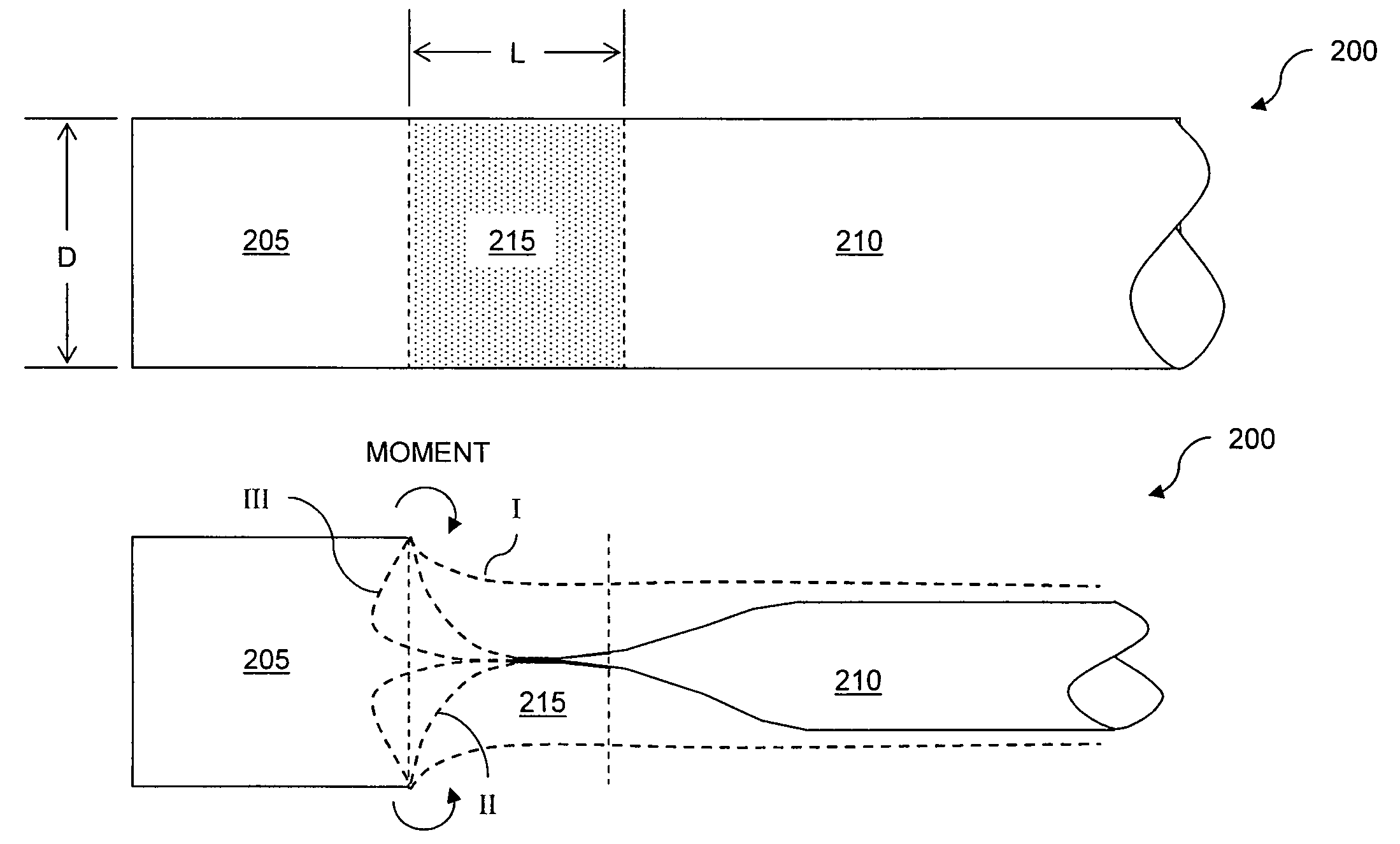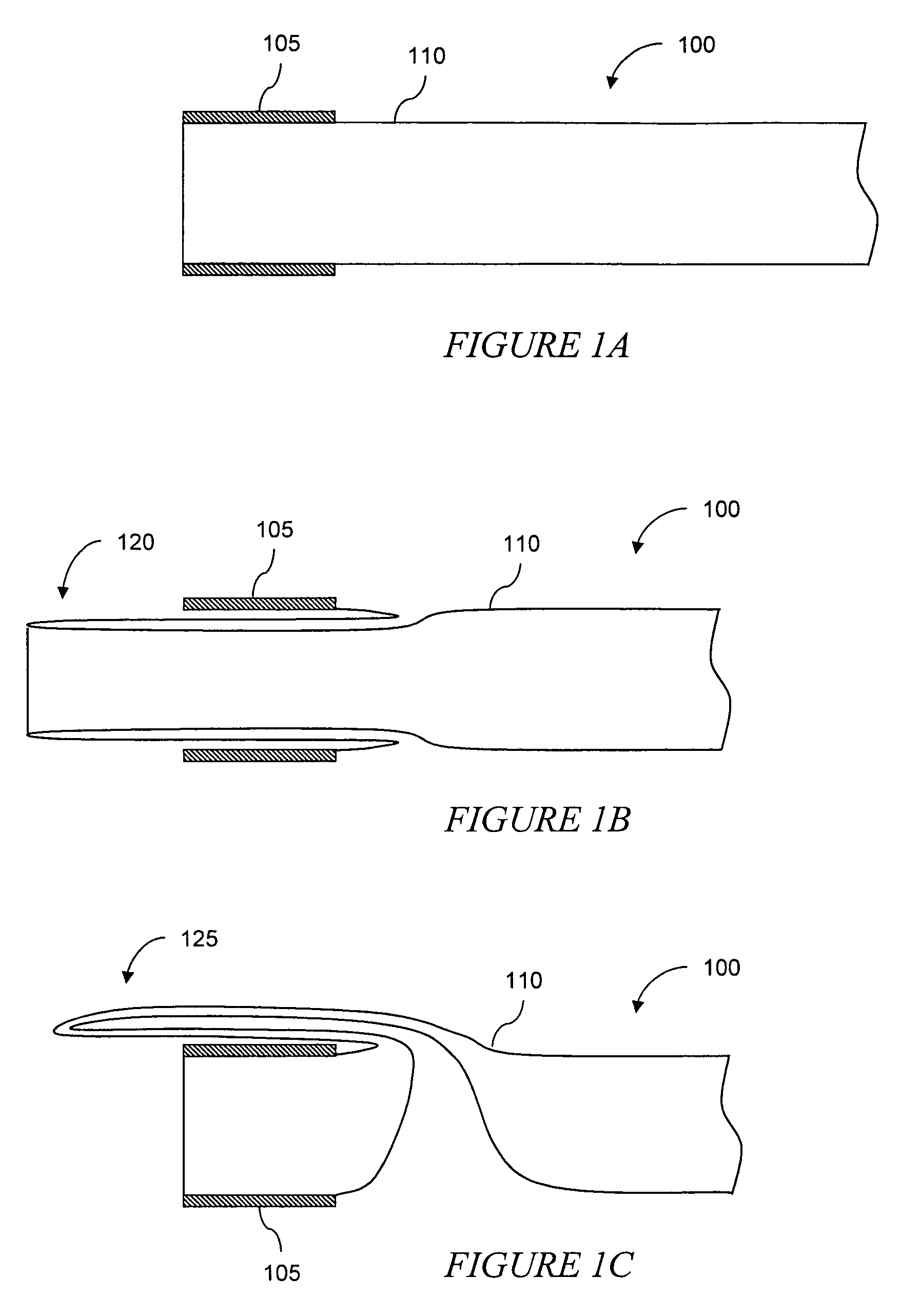Eversion resistant sleeves
a technology of eversion resistance and sleeves, applied in the field of eversion resistance sleeves, can solve problems such as prone to eversion of sleeves, and achieve the effect of enhancing the eversion resistance performance of sleeves and increasing stiffness
- Summary
- Abstract
- Description
- Claims
- Application Information
AI Technical Summary
Benefits of technology
Problems solved by technology
Method used
Image
Examples
Embodiment Construction
[0028]A description of preferred embodiments of the invention follows.
[0029]This invention relates to a method and device for implanting a sleeve within a natural body lumen of an animal, the sleeve including an anti-eversion feature to inhibit eversion of the sleeve when implanted. In particular, the invention relates to a bypass sleeve adapted for use within the digestive tract of an animal. Some examples of such intestinal implants are described in U.S. patent application Ser. No. 11 / 000,099, filed Nov. 30, 2004, and entitled “Bariatric Sleeve”; U.S. patent application Ser. No. 11 / 001,794, filed Nov. 30, 2004, and entitled “Methods of Treatment Using a Bariatric Sleeve”; U.S. patent application Ser. No. 10 / 726,011, filed Dec. 2, 2003, and entitled “Anti-Obesity Devices”; U.S. patent application Ser. No. 10 / 810,317, filed Mar. 26, 2004, and entitled “Enzyme Sleeve”; and U.S. patent application Ser. No. 10 / 811,293, filed Mar. 26, 2004, and entitled “Anti-Obesity Devices” all incorp...
PUM
 Login to View More
Login to View More Abstract
Description
Claims
Application Information
 Login to View More
Login to View More - R&D
- Intellectual Property
- Life Sciences
- Materials
- Tech Scout
- Unparalleled Data Quality
- Higher Quality Content
- 60% Fewer Hallucinations
Browse by: Latest US Patents, China's latest patents, Technical Efficacy Thesaurus, Application Domain, Technology Topic, Popular Technical Reports.
© 2025 PatSnap. All rights reserved.Legal|Privacy policy|Modern Slavery Act Transparency Statement|Sitemap|About US| Contact US: help@patsnap.com



